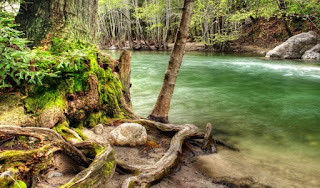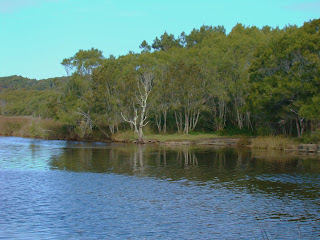The Congo River (also known as the Zaire River) is a river in Africa, and is the deepest river in the world, with measured depths in excess of 230 m (750 ft). It is the second largest river in the world by volume of water discharged, though it has only one-fifth the volume of the world's largest river, the Amazon. Additionally, its overall length of 4,700 km (2,920 mi) makes it the ninth longest river.
Its drainage basin covers 4,014,500 square kilometres (1,550,000 sq mi). The Congo's discharge at its mouth ranges from 23,000 cubic metres per second (810,000 cu ft/s) to 75,000 cubic metres per second (2,600,000 cu ft/s), with an average of 41,000 cubic metres per second (1,400,000 cu ft/s).
The river and its tributaries flow through the Congo rainforest, the second largest rain forest area in the world, second only to the Amazon Rainforest in South America. The river also has the second-largest flow in the world, behind the Amazon; the third-largest drainage basin of any river, behind the Amazon and Río de la Plata rivers; and is one of the deepest rivers in the world, at depths greater than 230 m (750 ft). Because large sections of the river basin lie above and below the equator, its flow is stable, as there is always at least one part of the river experiencing a rainy season.
The Congo gets its name from the ancient Kingdom of Kongo which inhabited the lands at the mouth of the river. The Democratic Republic of the Congo and the Republic of the Congo, both countries lying along the river's banks, are named after it. Between 1971 and 1997 the government of then-Zaire called it the Zaire River.
The Congo river at Maluku.
A statue depicting the Congo river in Parc du Cinquantenaire in Brussels, Belgium. Belgium was the colonial power of Belgian Congo from 1908-1960.
The sources of the Congo are in the highlands and mountains of the East African Rift, as well as Lake Tanganyika and Lake Mweru, which feed the Lualaba River, which then becomes the Congo below Boyoma Falls. The Chambeshi River in Zambia is generally taken as the source of the Congo in line with the accepted practice worldwide of using the longest tributary, as with the Nile River.
The Congo flows generally northwards from Kisangani just below the Boyoma falls, then gradually bends southwestwards, passing by Mbandaka, joining with the Ubangi River, and running into the Pool Malebo (Stanley Pool). Kinshasa (formerly Léopoldville) and Brazzaville are on opposite sides of the river at the Pool, where the river narrows and falls through a number of cataracts in deep canyons (collectively known as the Livingstone Falls), running by Matadi and Boma, and into the sea at the small town of Muanda.
The Congo River Basin is one of the distinct physiographic sections of the larger Mid-African province, which in turn is part of the larger African massive physiographic division.









